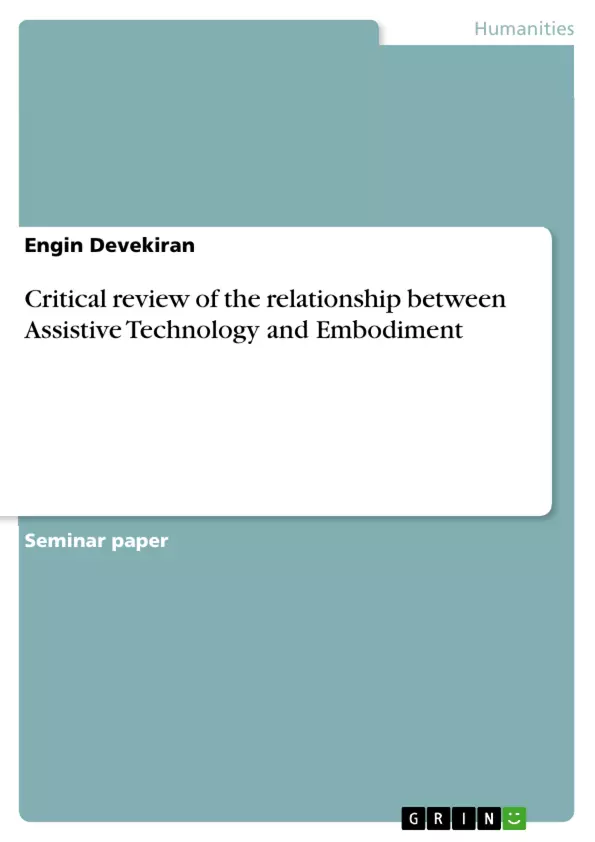In this paper critical aspects of embodiment relating to assistive technology will be discussed and evaluated. Issues of well-being and prosthesis use, current developments in prosthetic research and embodimental impacts of prostheses on users will be adressed.
The focus is on upper limb prostheses, as their relation to embodimental issues is less investigated than the relation of embodiment and lower limb prostheses.
Inhaltsverzeichnis (Table of Contents)
- Assistive Technology and Embodiment
- The Human Hand
- Integration of Prostheses into Body Image
- Social Facets of Prosthesis Embodiment
- Conclusion
Zielsetzung und Themenschwerpunkte (Objectives and Key Themes)
This essay aims to critically review the relationship between assistive technology and embodiment, focusing on the use of upper limb prostheses. It explores the functional and cultural relevance of the human hand, the psychological consequences of upper limb loss and prosthesis use, and the neurological correlates of body image. The essay also examines the social facets of prosthesis embodiment, considering the needs and concerns of affected persons.
- The complex relationship between assistive technology and embodiment
- The functional and cultural significance of the human hand
- The psychological impact of upper limb loss and prosthesis use
- The neurological processes involved in integrating prostheses into body image
- The social aspects of prosthesis embodiment and the needs of affected persons
Zusammenfassung der Kapitel (Chapter Summaries)
- The essay begins by introducing the concept of embodiment and assistive technology, using the example of glasses to illustrate the multifaceted nature of assistive devices. It then focuses on technology of replacement, particularly upper limb prostheses.
- The essay discusses the crucial role of the human hand in sensing the world and the profound impact of hand loss on individuals, highlighting the psychological and emotional consequences of amputation.
- The essay explores the neurological processes involved in integrating foreign objects, such as prostheses, into the body image. It discusses the "rubber hand illusion" experiment and its implications for understanding how prostheses can be integrated into body image.
- The essay examines the social facets of prosthesis embodiment, considering the needs and concerns of affected persons. It emphasizes the importance of individual needs and the diversity of low-tech and high-tech assistive products.
Schlüsselwörter (Keywords)
The main keywords and focus topics of this essay include assistive technology, embodiment, upper limb prosthesis, human hand, body image, amputation, phantom pain, neurological correlates, social facets, and individual needs.
- Citation du texte
- Engin Devekiran (Auteur), 2015, Critical review of the relationship between Assistive Technology and Embodiment, Munich, GRIN Verlag, https://www.grin.com/document/319187



